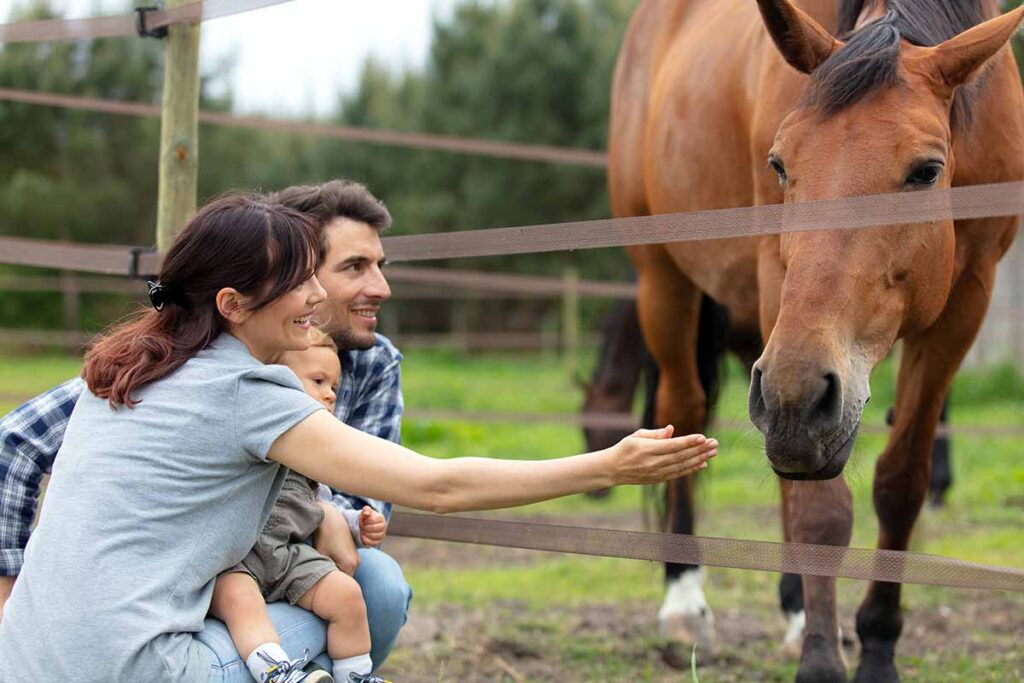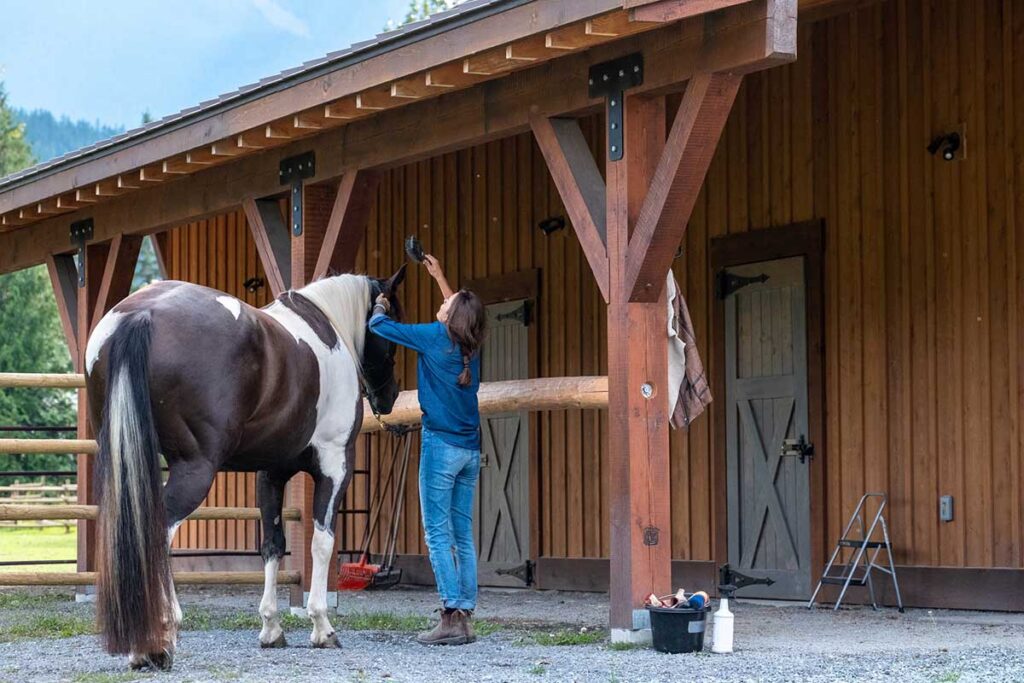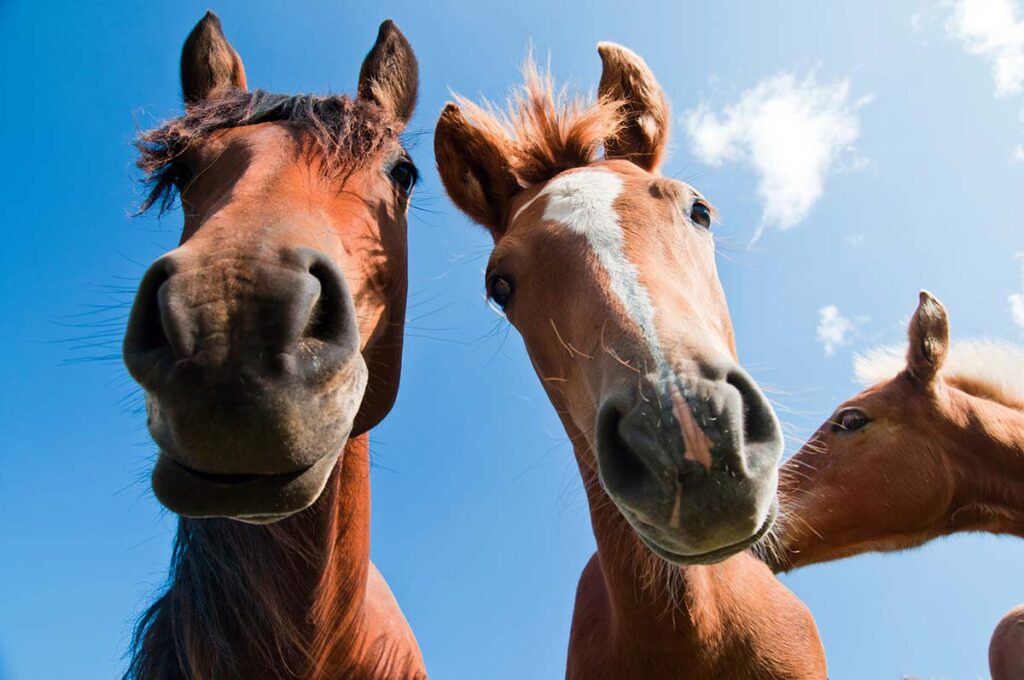A horse that suddenly and dramatically turns up three-legged lame can be panic-inducing for any owner, let alone a first-timer. One common cause of non-weight-bearing lameness that has a relatively simple fix, however, is a hoof abscess. A hoof abscess is a localized infection of a horse’s foot, usually behind the hoof wall or sole. While these infections can be extremely painful, they usually resolve easily with treatment within three to five days.
Signs Something’s Brewing
Clinical signs of a hoof abscess include:
- Lameness, often severe and non-weight-bearing.
- Swelling in the affected leg.
- Localized heat.
- Drainage or evidence of a “tract.”
- Increased pulse in the affected limb.
Often, hoof abscesses will “blow” or pop open and ooze a smelly pus, usually giving the horse near-immediate relief from the painful pressure.
There are two common types of hoof abscesses:
- Subsolar: Under the sole, which typically pop at the white line, bars, or heel bulbs.
- Submural: Under the wall, which typically pop at the coronary band.
Related Video: How To Recognize and Treat a Horse’s Hoof Abscess
What Causes a Hoof Abscess?

Hoof abscesses often result from an initial trauma, such as bruising or a puncture, which allows bacteria into the foot, where infection festers. The following management practices and health conditions can make horses more susceptible to getting hoof abscesses:
Rapidly changing wet/dry climates or wet-frozen environments. These conditions can degrade hoof quality and lead to bruising and injuries.
Poor hoof quality or conformation. Weak and/or imbalanced hooves are more vulnerable to the injuries that predispose a horse to abscesses.
Neglected hoof care. Lack of hoof hygiene and proper trimming and farriery can lead to weakened hooves.
Pituitary pars intermedia dysfunction (PPID, aka equine Cushing’s disease) or other diseases that compromise the immune system can make horses more prone to infection.
Rocky or hard footing. Poor footing can result in bruising, which can turn into an abscess.
Muddy, unsanitary living conditions. Standing on wet ground makes hooves overly soft. Combine those soft hooves with the bacteria growing in mud, and the conditions are ripe for hoof abscesses to form.
Treating a Horse’s Hoof Abscess

To locate an abscess, you’ll likely need the help of your veterinarian and/or farrier, who will use hoof testers to find the pain point and might open the abscess with a hoof knife to relieve the pressure and begin drainage.
Treatment can also include:
- Cleaning the foot.
- Removing the shoe, when necessary.
- Locating the entry wound (if there is one).
- Establishing drainage by softening the hoof capsule with foot soaks and/or poultices to encourage rupture and drainage.
- Keeping the foot wrapped and protected from debris entering and causing further infection.
- In some cases, anti-inflammatory medications and antibiotics.
Be prepared to treat an abscess by stocking your tack box with these first-aid essentials.
If your horse wears shoes, your farrier will remove the shoe from the affected hoof and replace it only when lameness has resolved and drainage has stopped.
Warning! A hoof abscess’s failure to resolve quickly could mean the infection has progressed into deeper hoof structures, such as the coffin bone or joint structures. This requires immediate veterinary attention.
Take-Home Message
Hoof abscesses can cause significant pain and affect your horse’s ability to move around. If you know the possible causes and classic signs, however, you can take proactive steps to prevent them from developing and deal with them quickly if they do arise. As always, contact your veterinarian if your horse is severely lame or you suspect a hoof abscess.








